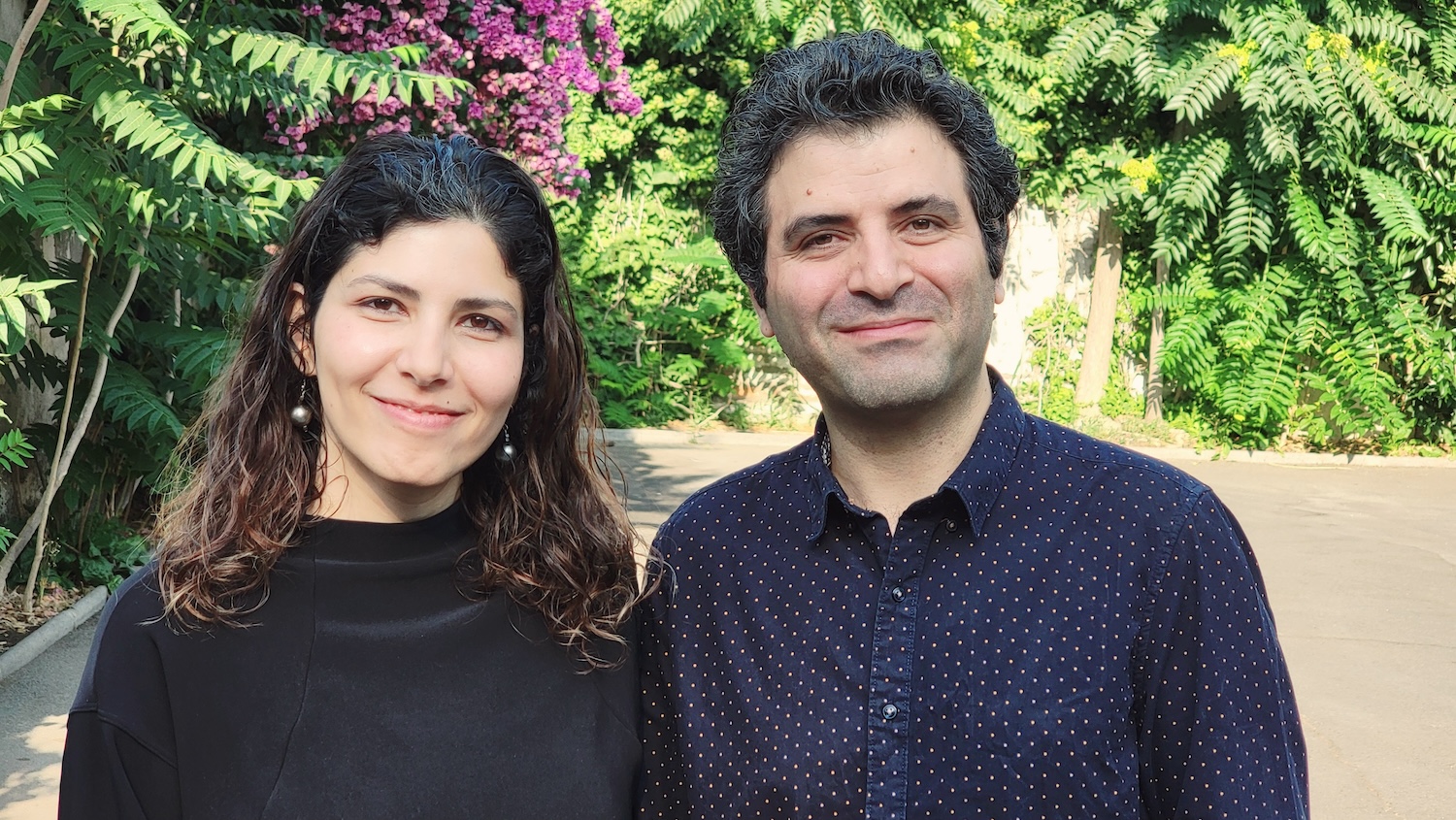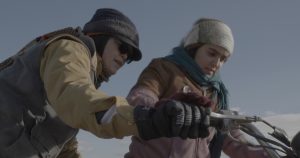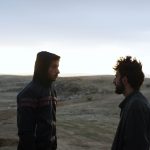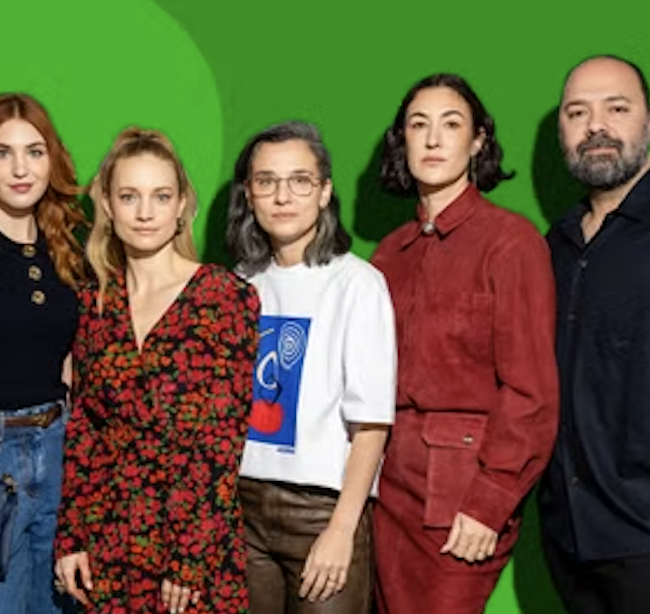A Conversation with Sara Khaki & Mohammadreza Eyni (CUTTING THROUGH ROCKS)

Married Iranian directors Mohammadreza Eyni and Sara Khaki just premiered Cutting Through Rocks—their feature debut—at the 2025 Sundance Film Festival (where I reviewed it). The documentary tells the story of Sara Shahverdi, who lives in a village in northwestern Iran, where she becomes the first woman ever elected to the local council. They follow her trajectory from popular political maverick to scourge of the establishment and then victim of vicious blowback. It’s a simultaneously inspiring and discouraging tale. I had a chance to talk with Eyni and Khaki by Zoom during the festival, and here is that conversation, edited for length and clarity. Photo above by Mauricio Lopez.
Hammer to Nail: For how long did you film?
Sara Khaki: We started production in 2017, and then it went on until 2023. We had 8 shooting trips and each shooting trip was anywhere between 30 days to …the longest shooting trip was 80 days. So every time we would visit this village, we would spend an extensive amount of time there to make sure that we could actually follow through with the layers of the story we were developing and make it feel that we were actually living there.
Mohammadreza Eyni: We didn’t expect there to be 8 sessions. Each time we were like, “OK, this is the last one.” But the layers just showed up and we thought that some stories, some sub characters, some different layers, demanded more attention and spending more time. We are happy that we did that.
HtN: I’m sure. How would you describe the eventual shooting ratio? 6 years is a lot of time.
SK: We had about 200 hours of material to work with and to edit with. So within that range of time we were able to shoot that much.
HtN: Some of your footage—in addition to just being informative—is really beautiful. I’m thinking of those sunsets with the motorcycle and shots like that. I’m curious, in those six years, technology evolved. Did you change up your cameras as you went along?
ME: Yes. I was working with the Canon C300, and I was happy with the result, but for this specific project, because intimacy was very important for us in that setting and in that village, we didn’t want to appear like very professional filmmakers. So I was looking for a smaller camera with a good quality and the Canon C70 was a new camera and I really, really enjoyed working with that. (pause) I’m selling Canon’s products now. (laughs) So that camera at that time was very similar to the C300, with the same quality but a smaller size. I think that smaller size helped us a lot regarding shooting in a more intimate setting. And also regarding the cinematic look you’re talking about, we are happy about the camera, too, which helped us to bring our vision to the screen.
HtN: I read in the press notes that the language of the village where the film takes place is Azeri Turkish. How many languages, give or take, are spoken throughout Iran? I always think of Farsi as sort of the main language, and I know there are versions of Urdu, as well.
SK: This country contains so many different backgrounds and cultures. There are different dialects and languages spoken; we have the Turkish community, and we have Kurdish and we have Luris. And in the south there are some people speaking Arabic. So it’s a mix of various many languages that are spoken, and accents.

Still from CUTTING THROUGH ROCKS (Subject Sara Shahverdi and village girl)
ME: Even when it’s the same language, there are many different accents. Iran is a very diverse country with many different backgrounds and traditions and it’s so beautiful. And about our film, I think 40% of Iranian people speak Azeri Turkish, but it’s very rare to find films in this language. So I’m very happy, since I come from the community, that we’re able to finally make a film about the Azeri Turkish speakers.
SK: It is just underrepresented.
HtN: That’s great! So let’s go now to the roots of the project. How did you first decide to make a film about Sara Shahverdi?
SK: I was working as an editor and living in Brooklyn, and that was 16 years after having emigrated to the US from Iran. And I really wanted to tell a story of a woman who chose not to leave her homeland and wanted to stay in her village or in her town and wanted to advocate for the rights of women and girls around her. Through extensive research, I came across a story of a woman who lives in the northwest who rides a motorcycle and who had been a midwife and delivered 400 kids. Those were intriguing enough details for me to try to see if I could get a hold of her number. And when I did, we spoke for 7 months and when she said she’s running for a council seat, then that was a time to really consider going to Iran.
And Mohammadreza and I had known each other through past collaborations. He was an Iran-based filmmaker and had worked extensively on stories about visual artists and visual art. So we had known each other and I knew who to call, so I called him and then we walked into this village and the production started right from there together.
HtN: You talked about the C70 allowing intimacy. Was it just the two of you most of the time filming or did you have any other crew?
MR: Most of the time we used only one camera; again, because of getting the intimacy that we were looking for. But for some scenes—some crowd scenes—we used two cameras and also we hired an additional camera person. And for some specific crowd scenes—I think it was, for example, at the night of celebration for Sara—it was necessary to have two cameras, one for people and one for Sarah, but for many scenes, we only used one camera.
HtN: And when it was just one camera, would it be you on camera, Mohammadreza, and you on sound, Sara? Is that how it worked?
MR: Exactly. And my cinematographer role comes under the umbrella of a directing role. I was observing all the time. The story was the most important part of cinematography for me because we’ve had a lot of discussions about the story, about the characters and many things. And when filming I was thinking about what is important in this scene regarding the story. And my duty was to get the best visual quality at that time to serve the story.
HtN: Speaking of serving the story and getting footage, I’m really amazed at some of what you captured, in terms of access. Now I read in the press notes how you believe that a combined male-female directing team, which is what you are, helped in terms of access to all aspects of life in the village, but I’m still amazed at some of the access you did obtain. I mean, how were you allowed to film in council meetings, elections, and most surprisingly of all, the courtroom. You’re over the shoulder of the judge at one point! So how did that happen?
MR: Different scenes, different approaches. But the secret sauce is being there for a long time. First of all, our dynamic as a couple helped us; the community let us enter their families, their houses. For me, as a male director, it was not possible at all to make a film about a community I’m coming from because it’s very masculine. Men are like, “You want to make film about our women? No way!” On top of that, they also wanted someone to know them and not come in as an outsider. And the third dimension was Sara Shahverdi as a main character. She helped us to go to all the corners of the village. And because of her reputation as a midwife and now as a council woman, to be able to go there and have Sara’s trust was key.

Still from CUTTING THROUGH ROCKS (Subject Sara Shahverdi)
Regarding some scenes like the teenage girls in school and the court, it took a lot of time to get permission. For the court scene—for example, for Ferehsteh’s scene—we spent a few hours there and we got one hour’s worth of footage of the dialogue between the judge and Ferehsteh. And we just get the sense of that here because sometimes they were repeating each other, asking the same questions and giving the same answers. And we were lucky in the editing room to have access to the different bits of dialogue. It was just one camera. And even for the school, it was one camera, which was a risky decision for us because we didn’t want to be there and not be able to capture something, but we thought that for these two things, we wanted only one camera.
HtN; That makes sense. It’s less disruptive. So how is Sara Shahverdi doing now after the pushback to her initiatives and to her very existence as an independent woman?
SK: So her case was closed, as you could see in the film.
HtN: It’s closed, but she seems to pull back a little bit.
SK: A little bit. But she still continues to advocate for the rights of women and girls. And there are some women who, because of her reputation, her background as a midwife, have a very deep connection with her. So sometimes without even an exchange of words, when she sees a woman in the street, it’s just an exchange of eye contact and they know each other so well because they have shared so many experiences. She’s been in one of the most vulnerable moments of their lives as a midwife. So there are so many things she knows about these women that they always seek her out for advice. Sara is self-taught, not a licensed lawyer, but she’s a self-taught lawyer. So she knows how to do certain paperwork and file a divorce, for example, for women or do things like that. So those kinds of activities continue to happen for Sara.
ME: She does a lot of pro bono work. She supports the girls and she helps many teenage girls to study and sometimes, economically—she doesn’t like to share this—she helps some poor families continue their education. And she’s a free spirit. In her bones, she’s an activist, a real activist, very honest about what she’s doing.
HtN: She’s amazing. So, you both live in the United States, but nevertheless, the regime in Iran, as we know, likes to crack down on filmmakers who make movies they don’t like that challenge the official view of things. Do you anticipate that with this film, given some of the challenges to the official order that it discusses, you might have problems in the future if you want to make films inside Iran again?
ME: I think it’s not a fair situation because we are filmmakers, we are responsible for our country and what is going on, and we want to improve it. We want to change it in a good way, and we love our country and the stories that come from our country, and we want to tell the stories about our country and the community. If they are going to stop us, it’s not fair. I’m coming from the community, I’ve witnessed many things, and if I am not going to tell the stories, who is going to tell them?
HtN: How did you decide on Cutting Through Rocks as a title?
ME: It comes from “Hammer to Nail.” (laughs)
SK: (laughs) Over the years of witnessing what is going on with Sara’s story and all the setbacks she’s been trying to overcome and talking extensively about her worldview, which is something that we share, as well, we’ve seen that she thinks of life and its struggles as a mountain of rocks. And if you chip away a small bit of that rock every day, at the end of the day, you’ll have a clear road. And that is something that is connecting us to the title of the movie, but also to the perseverance and hope that we share as filmmakers, too.
HtN: Excellent. Thank you both for talking to me and thank you for making the film. I found it quite powerful.
ME/SK: Thank you very much.
– Christopher Llewellyn Reed (@ChrisReedFilm)











